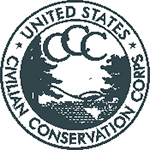History of Tobyhanna State Park
The landscape of the area is of broad, flat, swampy areas intermixed with low hills covered with a northern hardwood forest. Common tree species are beech, birch, and maple. This landscape affected the settlement and industries of the area.
Ice Industry
From about 1900 to 1936, Tobyhanna and Gouldsboro lakes were the site of active ice industries. The ice was cut from the lakes during the winter and stored in large barn-like structures. During the rest of the year, the ice was added to railroad boxcars hauling fresh produce and meats destined for East Coast cities.
Boxcar loads of ice were also shipped to cities for use in family iceboxes (early refrigerators). During the summer when ice usage peaked, up to 150 boxcar loads per day shipped out of the Tobyhanna, Gouldsboro, and Klondike (near Gouldsboro) plants. Some ice was even shipped to Florida for use in hospitals.
Military Reservation to State Park
In 1912, the federal government acquired the land that became the Tobyhanna Military Reservation. During World War I, (1914-1918), the Army used the reservation as a tank and ambulance corps training center and the National Guard used it as an artillery-training center.
From 1918 to 1931, the reservation was used for artillery training.

During the early 1930s, the reservation housed Civilian Conservation Corps (CCC) enrollees.
From 1937 to 1941, the reservation served as an artillery training center for West Point cadets. During World War II, the reservation housed German prisoners-of-war. From 1946 to 1948, the U.S. Army Corps of Engineers used the reservation.
During 1948, the War Assets Administration took control of the property, and in April of 1949, the Commonwealth of Pennsylvania received title to most of the 26,000 acres, with the remaining area operated as the Tobyhanna Army Depot.
Of the land acquired, about two-thirds of the area was made into Game Lands 127, and the remaining one-third was used to create both Gouldsboro and Tobyhanna state parks.
Tobyhanna State Park opened to the public in 1949, complete with parking areas, swimming beach, boat rental and boat launching site, water supply, and sanitary facilities. The camping area was added in 1959.
The former Department of Forests and Waters (DFW) subsequently acquired additional properties, and during 1956, the former Pennsylvania Fish Commission (PFC) purchased Gouldsboro Lake and land not included in the larger government tract.
During 1958, the DFW and the PFC agreed to combine the area owned by both agencies into a single recreational site. Gouldsboro State Park opened to the public in 1958.